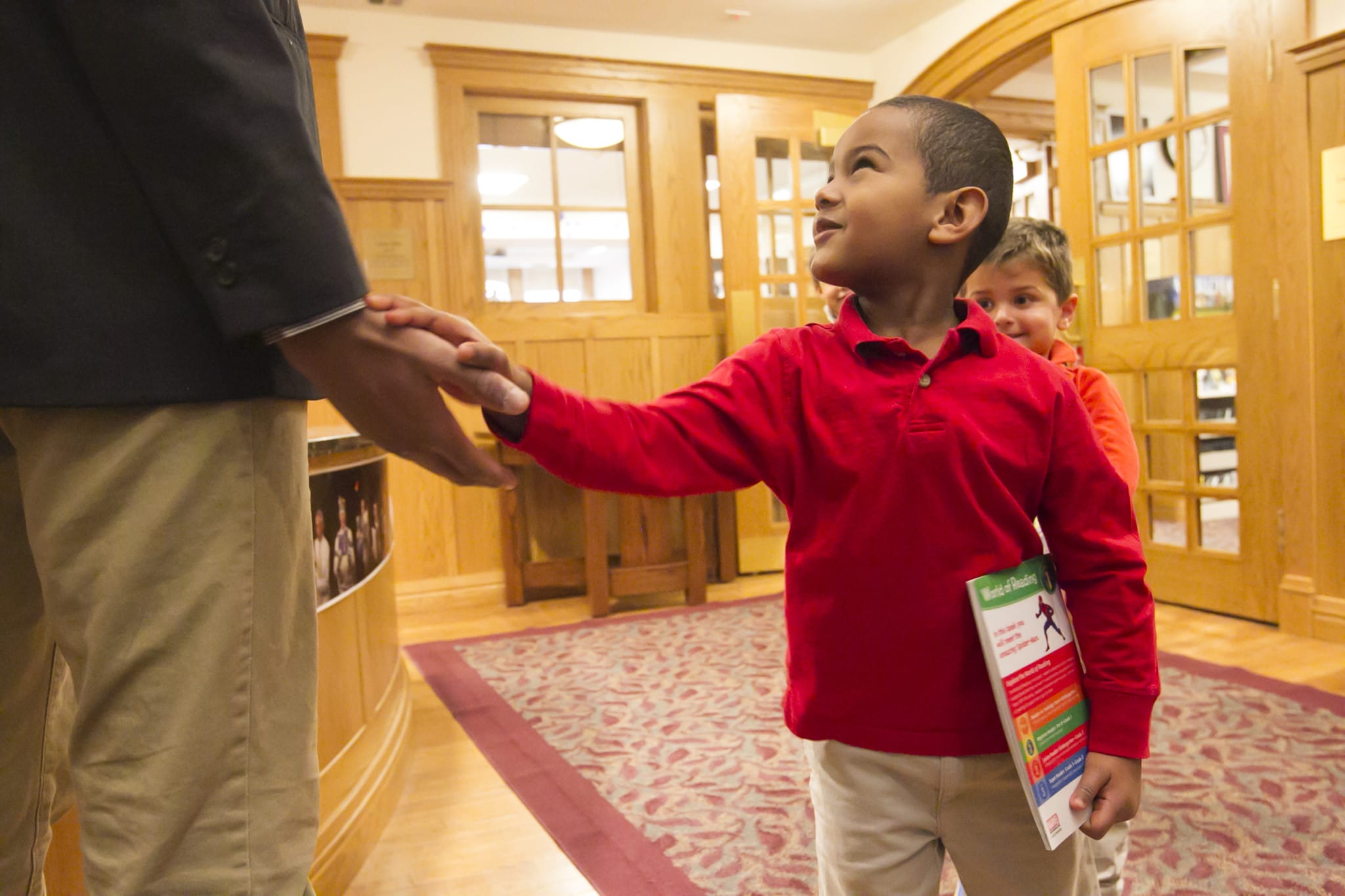“Treat others as you would want them to treat you.” There’s a reason this adage is so popular and most people can recite it by heart. Words can be a powerful tool when you want to raise a boy to be a gentleman. With words, you can teach young boys how to treat others with kindness and make responsible decisions in pre-K and beyond.
Of course, with all their energy focused on play, it’s hard to imagine how a four- or five-year-old would be able to listen to, and internalize, any guidance you might provide. But with the right approach, you can teach kids to be kind and help your child to understand the importance of making the right choices.
How to raise your son to be a gentleman
At our private elementary school near Boston, we believe that character-building starts at Pre-K.
We recently spoke to two out of Pre-K teachers here at Fessenden, Susan Heard and Alicia Kolovson, to get some ideas about teaching character to your 4 or 5-year old son. The following six tips, provided by Susan Alicia, are based on practices at our private school, but can—and ideally should—be used to reinforce learning when your son is at home as well.
.jpeg?width=3264&height=1836&name=alt%20P2%20Copy%20of%20Retouched%20Jace%20Playground%20Image%20(1).jpeg)
1. Teach the Power of Words
When they are 4 or 5, boys are continuously increasing their vocabulary and learning that words have power, but they don’t necessarily understand the effect that words have on others. This is something you can begin to talk about with your son.
For example, if you hear your son saying something unpleasant or unkind to another child, explain how his words might have hurt the other child’s feelings. Ask your son to choose some alternative “powerful” words that he might use to make others feel good.
2. Deliver Consistent Messages
Consistency is essential when teaching young children about expectations surrounding appropriate behavior. You can help your son recognize positive behaviors by using particular phrases on a regular basis.
For example, in the classroom we’re always reinforcing the idea of how words and actions can be “helpful or hurtful.” When a boy walks by and doesn’t offer to help his classmate who has tripped, we’ll ask “How do you think your friend felt when you walked by? Were your actions helpful or hurtful?”
3. Model Desired Behavior
“Walking the walk” is an important element of consistent message delivery and will have a profound impact when you're teaching your son to be a gentleman. If, for example, you want your son to hold doors open for others, model that behavior by opening doors for others when he is with you. At 4 years of age, he will be watching everything you do and taking cues from your actions and behaviors.
4. Catch Him Doing the Right Thing
If you witness your son doing something “right,” especially if he doesn’t know you’ve seen him, make a big deal of it. Give him praise and tell him specifically what he did to earn your admiration. This will help your son recognize the importance of doing the right thing, even when he believes no one is watching.

If you see your son offering to help a friend or classmate, whether that’s helping him tie his shoes or picking up a toy he’s dropped, let him know how proud you are of the kind choices that he is making.
5. Discuss Behavior in Terms of Choices
At age 4 or 5, your son won’t always do the right thing—and that’s okay! He is learning about kindness and his impact on other people. When you observe your son doing something that’s hurtful, talk to him about it. Ask him questions about why he made that particular choice and how he feels it might have impacted other people involved in the situation.
You don’t need to scold your son; just talk about the situation with him. Let him know that we all make mistakes and that we can learn from them and make better choices in the future.
6. Highlight Your Own Mistakes
It’s important for your son to see that everybody, even his parents, can make a mistake and this is a part of the learning process. When you make a small mistake, share it with your son. Bring it to his attention by dramatizing it a little (“Silly me!”), and share what you learned from it. In class, if we accidentally said it’s Thursday when it’s actually Friday, we would say “Oops! I said it was Thursday when it’s actually Friday! We all get mixed up sometimes. No big deal!”
Pre-K Can Help Your Character-Building Endeavors
The tips provided by Susan and Alicia reflect practices that are consistently used by teachers in Fessenden’s Pre-K program and other programs that believe that being a good person is as important as being a good student. Enrolling your son in pre-K can also help you learn the best ways to teach and reinforce positive behaviors in young children.
If you’d like to learn more about how to vet a private school, download our Pre-K & Kindergarten Private School Visit Checklist, which contains valuable guidance for evaluating a pre-kindergarten program.
Read On
.jpeg?width=352&name=Fessy_Classes_Richins_021023_104944_10mb_3584(1).jpeg)
3 Ways High-Quality Kindergarten Programs Help Boys Learn to Read
.jpg?width=352&name=Fessy_Classes_Richins_101524_114556_0225%20(1).jpg)
4 Myths About All-Boys Pre-K and Kindergarten — And Why They’re Wrong


